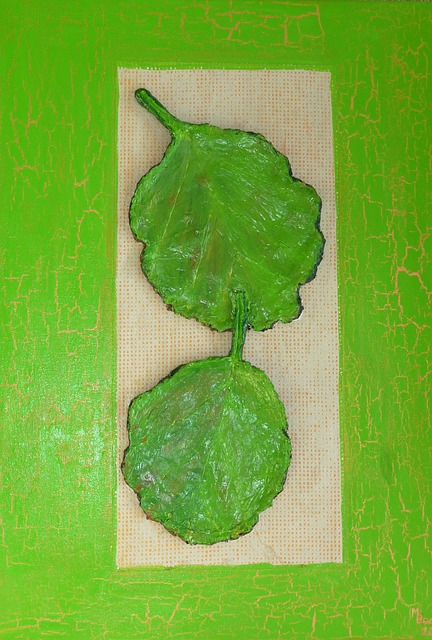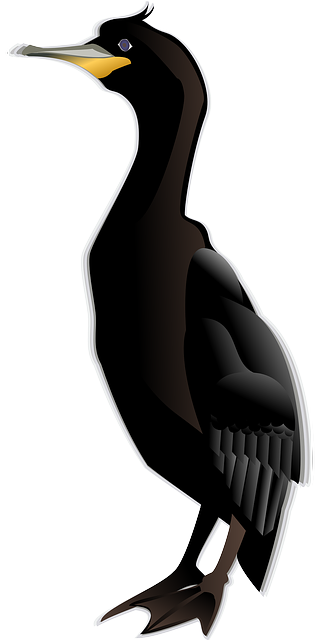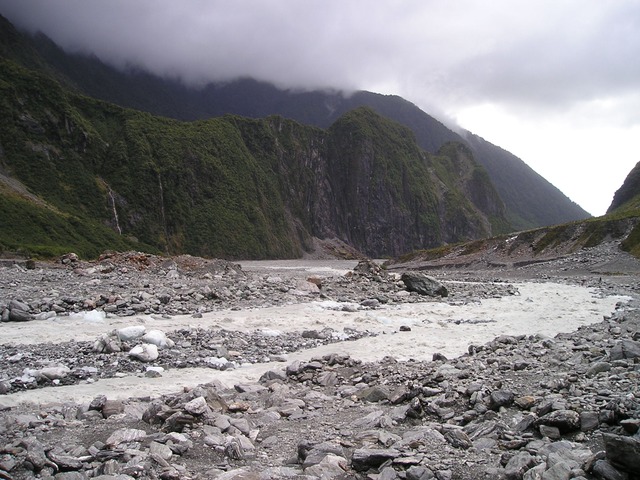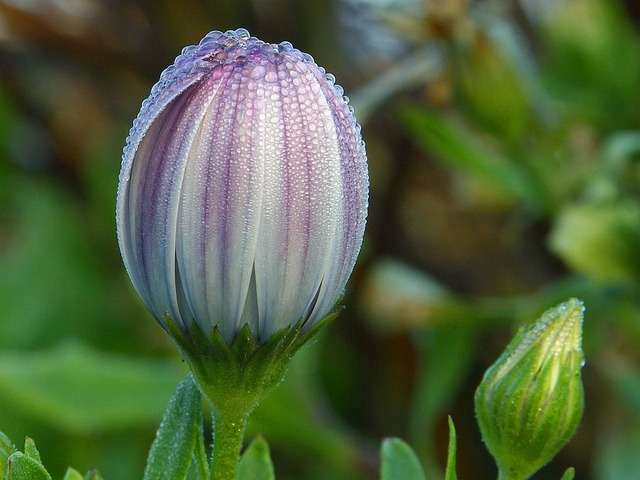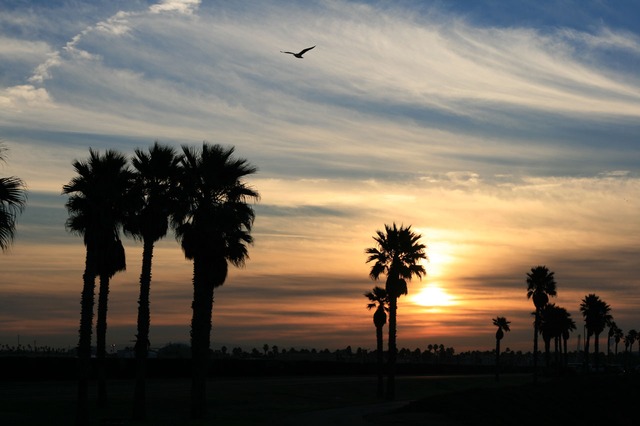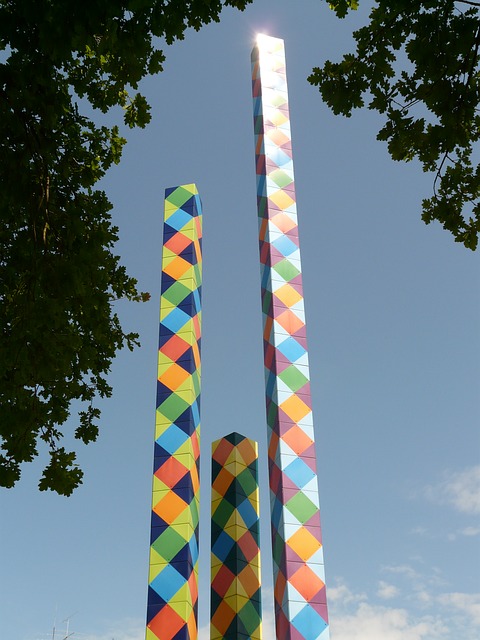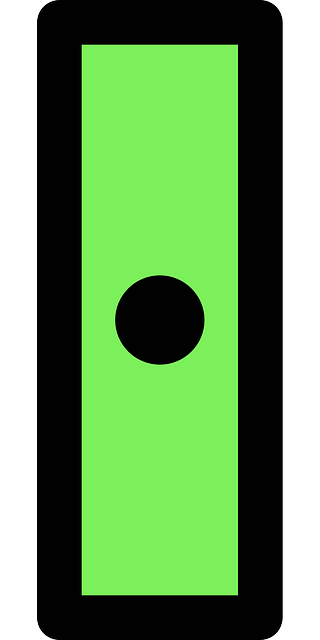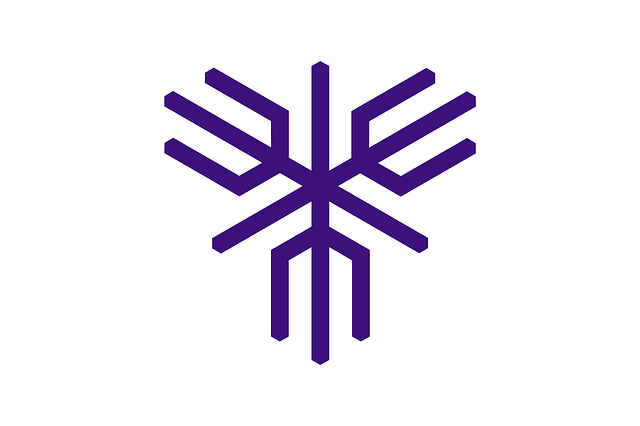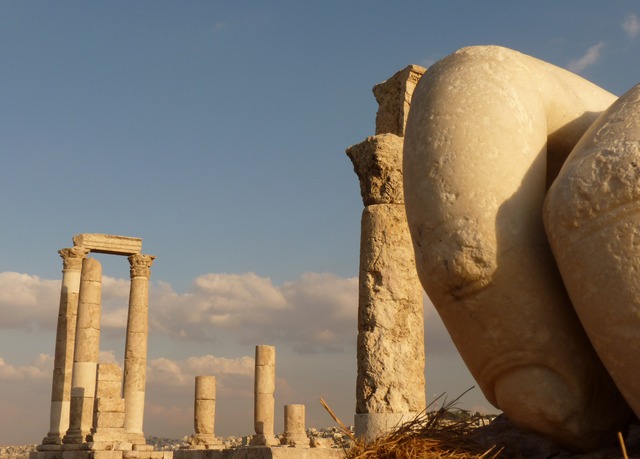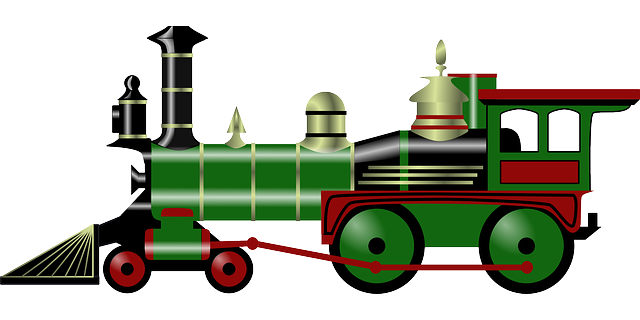صن يات-سن
|
صـُن يات-سـِن 孫文 / 孫中山 / 孫逸仙 | |
|---|---|
| صن يات-سن في ع1910 | |
|
رئيس جمهورية الصين المؤقت | |
|
في المنصب 01 يناير 1912 – 01 أبريل 1912 | |
| نائب الرئيس | Li Yuanhong |
| سبقه | پويي (امبراطور الصين) |
| خلفه | يوان شيكاي |
| رئيس وزراء الكومنتانگ | |
|
في المنصب 10 أكتوبر 1919 – 12 مارس 1925 | |
| سبقه | منصب مستحدث |
| خلفه | Zhang Renjie (كرئيس) |
| تفاصيل شخصية | |
| وُلِد |
Sun Wen 12 نوفمبر 1866 قرية Cuiheng، شيانگشان، گوانگدونگ، الصين |
| توفي | 12 مارس 1925 (عن عمر 58 عاماً) بـِيْجينگ، الصين |
| المدفن | ضريح صن يات-سن، نانجينگ، جيانگسو |
| الحزب | الكومنتانگ |
| انتماءات سياسية أخرى |
الحزب الثوري الصيني |
| الزوج |
لوموژن (1885 – 1915) Kaoru Otsuki (1903–1906) سونگ چيڠ-ليڠ (1915-1925) |
| القرين |
تشن تسويفن (جارية) (1892–1925) هاروأسادا (جارية)(1897–1902) |
| الأنجال |
سون فو سون يان سون وان فوميكوميياگاوا |
| الوالدان | سون داتشنگ السيدة يانگ |
| الجامعة الأم | كلية هونگ كونگ للطب للصينيين |
| المهنة |
طبيب سياسي ثوري محرر |
| التوقيع (بالصينية) | |
| الدين | إبراشي |
| التوقيع | |
| الخدمة العسكرية | |
| الولاء | [[Image:
Flag of the Republic of China.svg|23px|border |]] جمهورية الصين |
| الخدمة/الفرع | [[Image:
Flag of the Republic of China Army.svg|23px|border |]] جيش جمهورية الصين |
| سنوات الخدمة | 1917–1925 |
| الرتبة | المارشال الأعظم |
صـُن يات-سـِن Sun Yat-sen (صينية تقليدية: 孫逸仙 ؛ پن ين: Sūn Yìxiān) أوصـُن زونگشان (بالصينية التقليدية: 孫中山؛ پن ين: Sūn Zhōngshān) (و. 12 نوفمبر, 1866 - 12 مارس, 1925) كان زعيماً سياسياً وثورياً صينياً كثيراً ما يشار إليه بلقب أبي الصين الحديثة. لعب صـُن دوراً محورياً في تقويض حكم أسرة تشينگ عام 1911. وكان أول رئيس مؤقت عند تأسيس جمهورية الصين (ROC) في 1912 ولاحقاً شارك في تأسيس الكومنتانگ (KMT) حيث كان أول زعيم له. وكان صـُن عامل توحيد في الصين بعد الامبراطورية، ويبقى فريداً بين السياسيين الصينيين في القرن العشرين للتبجيل الشديد الذي يلقاه في جميع من البر الرئيسي للصين وتايوان.
Although Sun is considered to be one of the greatest leaders of modern China, his political life was one of constant struggle and frequent exile. After the success of the revolution and the Han Chinese regaining power after 268 years of living under Manchurian rule (Qing dynasty), he quickly resigned from his post as President of the newly founded Republic of China to Yuan Shikai, and led a successive revolutionary government as a challenge to the warlords who controlled much of the nation. Sun did not live to see his party consolidate its power over the country during the Northern Expedition. His party, which formed a fragile alliance with the Chinese Communist Party, split into two factions after his death.
كان مثاليًا لدرجة لا تتناسب وكونه قياديًا سياسيًا. إلا حتى مبادئ الشعب الثلاثة التي وضعها وهي القومية والديمقراطية والاشتراكية أصبحت الدليل الذي تسترشد به جمهورية الصين، التي تأسست عام 1912.
Sun's chief legacy resides in his developing of the political philosophy known as the Three Principles of the People: nationalism – independence from foreign imperialist domination, "rights of the people" – sometimes translated as "democracy", and the people's livelihood (just society).
النشأة
وُلِد صن لأبوين فقيرين في محافظة شيانگشان (الآن ژونگشان) بمقاطعة گوانگدونگ، وتلقى تعليمه في مدارس الإرساليات في هونج كونج، وهونولولو، فأصبح طبيبًا. سافر في الفترة من عام 1895 إلى 1911 كثيرًا حيث مضى إلى الولايات المتحدة، واليابان، وأوروبا ليدعوإلى مبادئ الجمهوريين، وللحصول على الدعم المادي لحركتِه ضد أسرة مانشو. ولقد ساعدته الجاليات الصينية فيما وراء البحار، كما ساعده المتعاطفون معه من الإنجليز والأمريكيين واليابانيين.
سنوات التعليم
At the age of 10, Sun Yat-sen began seeking schooling, and he met childhood friend Lu Haodong. By age 13 in 1878, after receiving a few years of local schooling, Sun went to live with his elder brother, Sun Mei (孫眉) in Honolulu. Sun Mei financed Sun Yat-sen's education and would later be a major contributor for the overthrow of the Manchus.
During his stay in Honolulu, Sun Yat-sen went to ʻIolani School where he studied English, التاريخ البريطاني، mathematics, science, and Christianity. While he was originally unable to speak English, Sun Yat-sen quickly picked up the language and received a prize for academic achievement from King David Kalākaua before graduating in 1882. He then attended Oahu College (now known as Punahou School) for one semester. In 1883 he was sent home to China as his brother was becoming worried that Sun Yat-sen was beginning to embrace Christianity.
When he returned to China in 1883 at age 17, Sun met up with his childhood friend Lu Haodong again at Beijidian (北極殿), a temple in Cuiheng Village. They saw many villagers worshipping the Beiji (literally North Pole) Emperor-God in the temple, and were dissatisfied with their ancient healing methods. They broke the statue, incurring the wrath of fellow villagers, and escaped to Hong Kong. While in Hong Kong in 1883 he studied at the Diocesan Boys' School, and from 1884 to 1886 he was at The Government Central School.
In 1886 Sun studied medicine at the Guangzhou Boji Hospital under the Christian missionary John G. Kerr. Ultimately, he earned the license of Christian practice as a medical doctor from the Hong Kong College of Medicine for Chinese (the forerunner of The University of Hong Kong) in 1892. Notably, of his class of 12 students, Sun was one of the only two who graduated.
آراؤه الدينية والتعميد المسيحي
In the early 1880s, Sun Mei sent his brother to ʻIolani School, which was under the supervision of British Anglicans and directed by an Anglican prelate named Alfred Willis. The language of instruction was English. Although Bishop Willis emphasized that no one was forced to accept Christianity, the students were required to attend chapel on Sunday. At Iolani School, young Sun Wen first came in contact with Christianity. In his work, Schriffin speculated that Christianity was to have a great influence on Sun's whole future political life.
Sun was later baptized in Hong Kong (on أربعة May 1884) by Rev. C. R. Hager an American missionary of the Congregational Church of the United States (ABCFM) to his brother's disdain. The minister would also develop a friendship with Sun. Sun attended To Tsai Church (道濟會堂), founded by the London Missionary Society in 1888, while he studied Western Medicine in Hong Kong College of Medicine for Chinese. Sun pictured a revolution as similar to the salvation mission of the Christian church. His conversion to Christianity was related to his revolutionary ideals and push for advancement.
التحول إلى ثوري
الزعماء الأربعة
During the Qing-dynasty rebellion around 1888, Sun was in Hong Kong with a group of revolutionary thinkers who were nicknamed the Four Bandits at the Hong Kong College of Medicine for Chinese. Sun, who had grown increasingly frustrated by the conservative Qing government and its refusal to adopt knowledge from the more technologically advanced Western nations, quit his medical practice in order to devote his time to transforming China.[]
فورن وجمعية إحياء الصين
In 1891, Sun met revolutionary friends in Hong Kong including Yeung Ku-wan who was the leader and founder of the Furen Literary Society. The group was spreading the idea of overthrowing the Qing. In 1894, Sun wrote an 8,000 character petition to Qing Viceroy Li Hongzhang presenting his ideas for modernizing China. He traveled to Tianjin to personally present the petition to Li but was not granted an audience. After this experience, Sun turned irrevocably toward revolution. He left China for Hawaii and founded the Revive China Society, which was committed to revolutionizing China's prosperity. Members were drawn mainly from Chinese expatriates, especially the lower social classes. The same month in 1894 the Furen Literary Society was merged with the Hong Kong chapter of the Revive China Society. Thereafter, Sun became the secretary of the newly merged Revive China society, which Yeung Ku-wan headed as president. They disguised their activities in Hong Kong under the running of a business under the name "Kuen Hang Club" (乾亨行).
الحرب الصينية اليابانية الأولى
In 1895, China suffered a serious defeat during the الحرب الصينية اليابانية الأولى. There were two types of responses. One group of intellectuals contended that the Manchu Qing government could restore its legitimacy by successfully modernizing. Stressing that overthrowing the Manchu would result in chaos and would lead to China being carved up by imperialists, intellectuals like Kang Youwei and Liang Qichao supported responding with initiatives like the Hundred Days' Reform. In another faction, Sun Yat-sen and others like Zou Rong wanted a revolution to replace the dynastic system with a modern nation-state in the form of a republic. The Hundred Days' reform turned out to be a failure by 1898.
من الانتفاضة إلى المنفى
In the second year of the establishment of the Revive China society on 26 October 1895, the group planned and launched the First Guangzhou uprising against the Qing in Guangzhou.Yeung Ku-wan directed the uprising starting from Hong Kong. However, plans were leaked out and more than 70 members, including Lu Haodong, were captured by the Qing government. The uprising was a failure. Sun received financial support mostly from his brother who sold most of his 12,000 acres of ranch and cattle in Hawaii. Additionally, members of his family and relatives of Sun would take refuge at the home of his brother Sun Mei at Kamaole in Kula, Maui.
المنفى في اليابان
Sun Yat-sen spent time living in Japan while in exile. He befriended and was financially aided by a democratic revolutionary named Miyazaki Tōten. Most Japanese who actively worked with Sun were motivated by a pan-Asian fear of encroaching Western imperialism. While in Japan, Sun also met and befriended Mariano Ponce, then a diplomat of the First Philippine Republic. During the Philippine Revolution and the Philippine–American War, Sun helped Ponce procure weapons salvaged from the Imperial Japanese Army and ship the weapons to the Philippines. By helping the Philippine Republic, Sun hoped that the Filipinos would win their independence so that he could use the archipelago as a staging point of another revolution. However, as the war ended in July 1902, America emerged victorious from a bitter 3-year war against the Republic. Therefore, the Filipino dream of independence vanished with Sun's hopes of collaborating with the Philippines in his revolution in China.
انتفاضة هويژوفي الصين
الثورة
تونگمنگهوي
In 1904, Sun Yat-sen came about with the goal "to expel the Tatar barbarians (i.e. Manchu), to revive Zhonghua, to establish a Republic, and to distribute land equally among the people" (驅除韃虜, 恢復中華, 創立民國, 平均地權). One of Sun's major legacies was the creation of his political philosophy of the Three Principles of the People. These Principles included the principle of nationalism (minzu, 民族), of democracy (minquan, 民權), and of welfare (minsheng, 民生).
On 20 August 1905, Sun joined forces with revolutionary Chinese students studying in Tokyo, Japan to form the unified group تونگمنگهوي (United League), which sponsored uprisings in China. By 1906 the number of Tongmenghui members reached 963 people.
دعم الملايو
Sun's notability and popularity extends beyond the Greater China region, particularly to Nanyang (Southeast Asia), where a large concentration of overseas Chinese resided in Malaya (Malaysia and Singapore). While in Singapore, he met local Chinese merchants Teo Eng Hock (張永福), Tan Chor Nam (陳楚楠) and Lim Nee Soon (林義順), which mark the commencement of direct support from the Nanyang Chinese. The Singapore chapter of the Tongmenghui was established onستة April 1906. Though some records claim the founding date to be end of 1905. The villa used by Sun was known as Wan Qing Yuan. At this point Singapore was the headquarters of the Tongmenghui.
Thus, after founding the Tong Meng Hui, Dr Sun advocated the establishment of The Chong Shing Yit Pao as the alliance's mouthpiece to promote revolutionary ideas. Later, he initiated the establishment of reading clubs across Singapore and Malaysia, in order to disseminate revolutionary ideas among the lower class through public readings of newspaper stories. The United Chinese Library, founded onثمانية August 1910, was one such reading club, first set up at leased property on the second floor of the Wan He Salt Traders in North Boat Quay.[]
The first actual United Chinese Library building was built between 1908 and 1911 below Fort Canning – 51 Armenian Street, commenced operations in 1912. The library was set up as a part of the 50 reading rooms by the Chinese Republicans to serve as an information station and liaison point for the revolutionaries. In 1987, the library was moved to its present site at Cantonment Road. But the Armenian Street building is still intact with the plaque at its entrance with Sun Yat Sen's words. With an initial membership of over 400, the library has about 180 members today. Although the United Chinese Library, with 102 years of history, was not the only reading club in Singapore during the time, today it is the only one of its kind remaining.[]
الدعم السيامي
In 1903, Sun made a secret trip to Bangkok in which he sought funds for his cause in Southeast Asia. His loyal followers published newspapers, providing invaluable support to the dissemination of his revolutionary principles and ideals among Chinese descent in Thailand. In Bangkok, Sun visited Yaowarat Road, in Bangkok's Chinatown. It was on this street that Sun gave a speech claiming that overseas Chinese were "the Mother of the Revolution". He also met local Chinese merchants Seow Houtseng, whose sent financial support to him.
Sun's speech on Yaowarat street was commemorated by the street later being named "Sun Yat Sen Street" or "Soi Sun Yat Sen" (بالتايلندية: ซอยซุนยัตเซ็น) in his honour.
انتفاضة Zhennanguan
On 1 December 1907, Sun led the Zhennanguan uprising against the Qing at Friendship Pass, which is the border between Guangxi and Vietnam. The uprising failed after seven days of fighting. In 1907 there were a total of four uprisings that failed including Huanggang uprising, Huizhou seven women lake uprising and Qinzhou uprising. In 1908 two more uprisings failed one after another including Qin-lian uprising and Hekou uprising.
الحركات المضادة لصن
Because of these failures, Sun's leadership was challenged by elements from within the Tongmenghui who wished to remove him as leader. In Tokyo 1907–1908 members from the recently merged Restoration society raised doubts about Sun's credentials. Tao Chengzhang (陶成章) and Zhang Binglin publicly denounced Sun with an open leaflet called "A declaration of Sun Yat-sen's criminal acts by the revolutionaries in Southeast Asia". This was printed and distributed in reformist newspapers like Nanyang Zonghui Bao. Their goal was to target Sun as a leader leading a revolt for profiteering gains.
The revolutionaries were polarized and split between pro-Sun and anti-Sun camps. Sun publicly fought off comments about how he had something to gain financially from the revolution. However, by 19 July 1910, the Tongmenghui headquarters had to relocate from Singapore to Penang to reduce the anti-Sun activities. It is also in Penang that Sun and his supporters would launch the first Chinese "daily" newspaper, the Kwong Wah Yit Poh in December 1910.
ثورة 1911
To sponsor more uprisings, Sun made a personal plea for financial aid at the Penang conference held on 13 November 1910 in الملايو. The leaders launched a major drive for donations across the شبه جزيرة الملايو. They raised HK$187,000.
On 27 April 1911, revolutionary Huang Xing led a second Guangzhou uprising known as the Yellow Flower Mound revolt against the Qing. The revolt failed and ended in disaster; the bodies of only 72 revolutionaries were found. The revolutionaries are remembered as martyrs.
Onعشرة October 1911, a military uprising at Wuchang took place led again by Huang Xing. At the time, Sun had no direct involvement as he was still in exile. Huang was in charge of the revolution that ended over 2000 years of imperial rule in China. When Sun learned of the successful rebellion against the Qing emperor from press reports, he returned to China from the United States accompanied by his closest foreign advisor, the American, "General" Homer Lea. He met Lea in London, where he and Lea unsuccessfully tried to arrange British financing for the new Chinese republic. Sun and Lea then sailed for China, arriving there on 21 December 1911.
The uprising expanded to the Xinhai Revolution also known as the "Chinese Revolution" to overthrow the last Emperor Puyi. After this event,عشرة October became known as the commemoration of Double Ten Day.
جمهورية الصين بالكثير من الحكومات
الحكومة المؤقتة
On 29 December 1911 a meeting of representatives from provinces in Nanking (Nanjing) elected Sun Yat-sen as the "provisional president" (臨時大總統). 1 January 1912 was set as the first day of the First Year of the Republic.Li Yuanhong was made provisional vice-president and Huang Xing became the minister of the army. The new Provisional Government of the Republic of China was created along with the Provisional Constitution of the Republic of China. Sun is credited for the funding of the revolutions and for keeping the spirit of revolution alive, even after a series of failed uprisings. His successful merger of minor revolutionary groups to a single larger party provided a better base for all those who shared the same ideals. A number of things were introduced such as the republic calendar system and new fashion like Zhongshan suits.
حكومة بـِيْيانگ
يوان شيكاي، الذي سيطر على جيش بـِيْيانگ, the military of northern China, was promised the position of President of the Republic of China if he could get the Qing court to abdicate. On 12 February 1912 Emperor Puyi did abdicate the throne. Sun stepped down as President, and Yuan became the new provisional president in Beijing onعشرة March 1912. The provisional government did not have any military forces of its own. Its control over elements of the New Army that had mutinied was limited and there were still significant forces which still had not declared against the Qing.
Sun Yat-sen sent telegrams to the leaders of all provinces requesting them to elect and to establish the National Assembly of the Republic of China in 1912. In May 1912 the legislative assembly moved from Nanjing to Beijing with its 120 members divided between members of تونگمنگهوي and a Republican party that supported Yuan Shikai. Many revolutionary members were already alarmed by Yuan's ambitions وحكومة بـِيْيانگ المتمركزة في الشمال.
الحزب الوطني والثورة الثانية
Tongmenghui member Song Jiaoren quickly tried to control the parliament. He mobilized the old Tongmenghui at the core with the merger of a number of new small parties to form a new political party called the Kuomintang (Chinese nationalist party, commonly abbreviated as "KMT") on 25 August 1912 at Huguang Guild Hall Beijing. The 1912–1913 National assembly election was considered a huge success for the KMT winning 269 of the 596 seats in the lower house and 123 of the 274 senate seats. The Second Revolution took place where Sun and KMT military forces tried to overthrow Yuan's forces of about 80,000 men in an armed conflict in July 1913. The revolt against Yuan was unsuccessful. Sun was forced to seek asylum in Japan with politician and industrialist Fusanosuke Kuhara. In retaliation the national party leader Song Jiaoren was assassinated, almost certainly by a secret order of Yuan, on 20 March 1913.
الفوضى السياسية
In 1915 Yuan Shikai proclaimed the Empire of China (1915–1916) with himself as Emperor of China. Sun took part in the Anti-Monarchy war of the Constitutional Protection Movement, while also supporting bandit leaders like Bai Lang during the Bai Lang Rebellion. This marked the beginning of the Warlord Era. In 1915 Sun wrote to the Second International, a socialist-based organization in Paris, asking it to send a team of specialists to help China set up the world's first socialist republic. At the time there were many theories and proposals of what China could be. In the political mess, both Sun Yat-sen and Xu Shichang were announced as President of the Republic of China.
الطريق إلى التجريدة الشمالية
حكومة گوانگژوالمتعسكرة
China had become divided between different military leaders without a proper central government. Sun saw the danger of this and returned to China in 1917 to advocate Chinese reunification. In 1921 he started a self-proclaimed military government in گوانگژوand was elected Grand Marshal. Between 1912 and 1927 three governments had been set up in South China: the Provisional government in Nanjing (1912), the Military government in Guangzhou (1921–1925), and the National government in Guangzhou and later Wuhan (1925–1927). The southern separatist government in the South was established to rival the Beiyang government in the north. Yuan Shikai had banned the KMT. The short lived Chinese Revolutionary Party was a temporary replacement for the KMT. Onعشرة October 1919 Sun resurrected the KMT with the new name Chung-kuo الكومنتانگ (الصينية المبسطة: 中国国民党; الصينية التقليدية: 中國國民黨; پنين: Zhōngguó guómíndǎng), or the "Nationalist Party of China".
التعاون بين الكومنتانگ والشيوعيين
By this time Sun had become convinced that the only hope for a unified China lay in a military conquest from his base in the south, followed by a period of political tutelage that would culminate in the transition to democracy. In order to hasten the conquest of China, he began a policy of active cooperation with the Communist Party of China (CPC). Sun and the Soviet Union's Adolph Joffe signed the Sun-Joffe Manifesto in January 1923. Sun received help from the Comintern for his acceptance of communist members into his KMT. Revolutionary and socialist leader Vladimir Lenin praised Sun and the KMT for their ideology and principles. Lenin praised Sun and his attempts at social reformation, and also congratulated him for fighting foreign Imperialism. Sun also returned the praise, calling him a "great man", and sent his congratulations on the revolution in Russia.
With the Soviets' help, Sun was able to develop the military power needed for the Northern Expedition against the military at the north. He established the Whampoa Military Academy near Guangzhou with Chiang Kai-shek as the commandant of the National Revolutionary Army (NRA). Other Whampoa leaders include Wang Jingwei and Hu Hanmin as political instructors. This full collaboration was called the First United Front.
مخاوف مالية
In 1924 Sun appointed his brother-in-law T. V. Soong to set up the first Chinese Central bank called the Canton Central Bank. To establish national capitalism and a banking system was a major objective for the KMT. However Sun was not without some opposition as there was the Canton volunteers corps uprising against him.
الخطب الأخيرة
In February 1923 Sun made a presentation to the Students' Union in Hong Kong University and declared that it was the corruption of China and the peace, order and good government of Hong Kong that turned him into a revolutionary. This same year, he delivered a speech in which he proclaimed his Three Principles of the People as the foundation of the country and the Five-Yuan Constitution as the guideline for the political system and bureaucracy. Part of the speech was made into the National Anthem of the Republic of China.
Onعشرة November 1924, Sun traveled north to Tianjin and delivered a speech to suggest a gathering for a "national conference" for the Chinese people. It called for the end of warlord rules and the abolition of all unequal treaties with the Western powers. Two days later, he traveled to Beijing to discuss the future of the country, despite his deteriorating health and the ongoing civil war of the warlords. Among the people he met was the Muslim General Ma Fuxiang, who informed Sun that they would welcome his leadership. On 28 November 1924 Sun traveled to Japan and gave a speech on Pan-Asianism at Kobe, Japan.
حزب كومنتانج
أصبح لحزب كومنتانج بزعامة صن وجود سياسي عام 1911، بعد انتفاضة ووتشانگ التي أطاحت بنظام مانشو. حاول صن في الفترة من عام 1911 وحتى عام 1922، توحيد الصين وإقامة حكومة مستقرة تبنَّت قانونًا أصبح صن بموجبه الحاكم المؤقت لجمهورية الصين عام 1912، حيث كانت الأوضاع السياسية في تلك الفترة متقلبة.
وحتى يضمن صن وحدة الصين استنطق من منصبه كرئيس للصين متنازلا ليوان شيكاي بعد ستة أسابيع ونصف فقط من توليه الرئاسة.
مجهوداته اللاحقة
اختلف صن في عام 1913، مع سياسات يوان ونظم ضده ثورة هرب على أثرها لليابان. وتم طرد أعضاء حزب الكومنتانج من البرلمان ـ واجتمع الثوار مرة أخرى لإنشاء حكومة منفصلة بموجب قانون عام 1912، وفيخمسة مايو1921 أصبح صن مرة أخرى رئيسا لهذه الحكومة التي كان مقرها في كانتون. ثم طـُرِد منها في عام 1922، ولكنه عاد إليها عام 1923.
جمهورية الصين
واصل صن العمل على توحيد الصين. حيث اتجه، بعد فشله في الحصول على معونة من الغرب، إلى الاتحاد السوفيتي (السابق) لتلقي المال والمساعدة. تمكّن صن من إعادة تنظيم حزب كومنتانج وجيشه، كما أنشأ أكاديمية وامپوا العسكرية تحت إدارة تشيانگ كاي-شك.
الطريق إلى الحملة الشمالية ووفاته
توفي صن إثر إصابته بالسرطان، عندما كان يحضر مؤتمرًا في بكين.
وفي عام 1929، نُقِل رفاته إلى ضريح أقيم تكريمًا له في نانجينگ. وبعد موته أصبحت مبادئه السياسية شعارات ينادي بها أتباعه. وفي الفترة بين الثلاثينيات والأربعينيات من القرن العشرين حقق چيانگ كاي-شك وحدة الصين تحت ظل حكومة مركزية كافح صن دون طائل من قبل ليحققها.
ذكراه
الصراع على السلطة
After Sun's death, a power struggle between his young protégé Chiang Kai-shek and his old revolutionary comrade Wang Jingwei split the KMT. At stake in this struggle was the right to lay claim to Sun's ambiguous legacy. In 1927 Chiang Kai-shek married Soong Mei-ling, a sister of Sun's widow Soong Ching-ling, and subsequently he could claim to be a brother-in-law of Sun. When the Communists and the Kuomintang split in 1927, marking the start of the Chinese Civil War, each group claimed to be his true heirs, a conflict that continued through World War II. Sun's widow, Soong Ching-ling, sided with the Communists during the Chinese Civil War and served from 1949 to 1981 as Vice-President (or Vice-Chairwoman) of the People's Republic of China and as Honorary President shortly before her death in 1981.
عبادة الفرد
A personality cult in the Republic of China was centered on Sun and his successor, Generalissimo Chiang Kai-shek. Chinese Muslim Generals and Imams participated in this cult of personality and one party state, with Muslim General ما بوفانگ making people bow to Sun's portrait and listen to the national anthem during a Tibetan and Mongol religious ceremony for the Qinghai Lake God. Quotes from the Quran and Hadith were used among Hui Muslims to justify Chiang Kai-shek's rule over China.
The Kuomintang's constitution designated Sun as party president. After his death, the Kuomintang opted to keep that language in its constitution to honor his memory forever. The party has since been headed by a director-general (1927–1975) and a chairman (since 1975), which discharge the functions of the president.
أبوالأمة
Sun Yat-sen remains unique among 20th-century Chinese leaders for having a high reputation both in mainland China and in Taiwan. In Taiwan, he is seen as the Father of the Republic of China, and is known by the posthumous name Father of the Nation, Mr. Sun Zhongshan (صينية تقليدية: 國父 孫中山先生, where the one-character space is a traditional homage symbol). His likeness is still almost always found in ceremonial locations such as in front of legislatures and classrooms of public schools, from elementary to senior high school, and he continues to appear in new coinage and currency.
سابق الثورة
On the mainland, Sun is seen as a Chinese nationalist, proto-socialist, first president of a Republican China and is highly regarded as the Forerunner of the Revolution (革命先行者). He is even mentioned by name in the preamble to the Constitution of the People's Republic of China. In recent years, the leadership of the Communist Party of China has increasingly invoked Sun, partly as a way of bolstering Chinese nationalism in light of Chinese economic reform and partly to increase connections with supporters of the Kuomintang on Taiwan which the PRC sees as allies against Taiwan independence. Sun's tomb was one of the first stops made by the leaders of both the Kuomintang and the People First Party on their pan-blue visit to mainland China in 2005. A massive portrait of Sun continues to appear in Tiananmen Square for May Day and National Day.
التقديس
Sun is venerated as a Saint in Đạo Cao Đài, a religion established in Vietnam in 1926. He, along with the two other Saints Victor Hugo and Nguyễn Bỉnh Khiêm, represented mankind to declare the Alliance (peaceful treaty) with God.
العائلة
Sun Yat-sen was born to Sun Dacheng (孫達成) and his wife, lady Yang (楊氏) on 12 November 1866. At the time his father was age 53, while his mother was 38 years old. He had an older brother, Sun Dezhang (孫德彰), and an older sister, Sun Jinxing (孫金星), who died at the early age of 4. Another older brother, Sun Deyou (孫德祐), died at the age of 6. He also had an older sister, Sun Miaoqian (孫妙茜), and a younger sister, Sun Qiuqi (孫秋綺).
At age 20, Sun had an arranged marriage with fellow villager Lu Muzhen. She bore a son, Sun Fo, and two daughters, Sun Jinyuan (孫金媛) and Sun Jinwan (孫金婉). Sun Fo was the grandfather of Leland Sun, who spent 37 years working in Hollywood as an actor and stuntman. Sun Yat-sen was also the godfather of Paul Myron Anthony Linebarger, American author and poet who wrote under the name Cordwainer Smith.
Sun's first concubine, the Hong Kong-born Chen Cuifen, lived in Taiping, Perak, Malaysia for 17 years. The couple adopted a local girl as their daughter. Cuifen subsequently relocated to China, where she died.
On 25 October 1915 in Japan, Sun married Soong Ching-ling, one of the Soong sisters, Soong Ching-Ling's father was the American-educated Methodist minister Charles Soong, who made a fortune in banking and in printing of Bibles. Although Charles Soong had been a personal friend of Sun's, he was enraged when Sun announced his intention to marry Ching-ling because while Sun was a Christian he kept two wives, Lu Muzhen and Kaoru Otsuki; Soong viewed Sun's actions as running directly against their shared religion.
Soong Ching-Ling's sister, Soong Mei-ling, later married Chiang Kai-shek.
جدل
المبادئ الثلاث الجديدة للشعب
At one time CPC general secretary and PRC president Jiang Zemin claimed Sun Yat-sen had a "New Three Principles of the People" (新三民主義) which consisted of "working with the soviets, working with the communists and helping the farmers" (聯俄, 聯共, 扶助工農). Lily Sun said the CPC was distorting Sun's legacy in 2001. She then voiced her displeasure in 2002 in a private letter to Jiang about the distortion of history. In 2008 Jiang Zemin was willing to offer US$10 million to sponsor a Xinhai Revolution anniversary celebration event. According to Ming Pao she could not take the money because she would no longer have the freedom to communicate the revolution. This concept is still currently available on Baike Baidu.
قضية إزالة شعار الكومنتانگ
In 1981, Lily Sun took a trip to Sun Yat-sen mausoleum in Nanjing, People's Republic of China. The emblem of the KMT had been removed from the top of his sacrificial hall at the time of her visit, but was later restored. On another visit in May 2011, she was surprised to find the four characters "General Rules of Meetings" (會議通則), a document that Sun wrote in reference to Robert's Rules of Order had been removed from a stone carving.
أبوقضية تايوان المستقلة
In November 2004, the ROC Ministry of Education proposed that Sun Yat-sen was not the father of Taiwan. Instead, Sun was a foreigner from mainland China. Taiwanese Education minister Tu Cheng-sheng and Examination Yuan member Lin Yu-ti, both of whom supported the proposal, had their portraits pelted with eggs in protest. At a Sun Yat-sen statue in Kaohsiung, a 70-year-old ROC retired soldier committed suicide as a way to protest the ministry proposal on the anniversary of Sun's birthday 12 November.
انظر أيضاً
- Three Principles of the People
- تاريخ جمهورية الصين
- سياسة جمهورية الصين
- أبوالأمة
- Sun Yat-sen Mausoleum, in Nanjing
- Dr. Sun Yat-sen Museum, in Hong Kong
- Sun Yat-sen Memorial Hall, in Taipei
- Sun Yat Sen Nanyang Memorial Hall
- Sun Yat-sen House (Nanjing)
- Zhongshan Park
- Sun Yat-sen stamps
- Sun Yat-sen University, one of the top twenty universities in China; and National Sun Yat-sen University in Taiwan.
- Dr. Sun Yat-Sen Classical Chinese Garden, in Vancouver, the largest classical Chinese gardens outside of Asia
- كومنتانگ
- Warlord era
- Whampoa Military Academy
- Communist Party of China
- Chinese Anarchism
- Chinese Nationalism
- Postage stamps and postal history of China
- Zhongshan Memorial Middle School
- Chiang Kai-shek
المراجع
- ^ "Three Principles of the People". Encyclopedia Britannica. Retrieved 15 May 2017.
-
^ Trescott, Paul B. (2007). . Chinese University Press. pp. 46–48.
'The teachings of your single-taxer, Henry George, will be the basis of our program of reform.'
- ^ Schoppa, Keith R. [2000] (2000). The Columbia guide to modern Chinese history. Columbia university press. ISBN 0-231-11276-9, ISBN 978-0-231-11276-5. p 282.
- ^ خطأ استشهاد: وسم
<ref>غير سليم؛ لا نص تم توفيره للمراجع المسماةsingtao1 - ^ خطأ استشهاد: وسم
<ref>غير سليم؛ لا نص تم توفيره للمراجع المسماةMaui - ^ خطأ استشهاد: وسم
<ref>غير سليم؛ لا نص تم توفيره للمراجع المسماةKHON2SunMei - ^ خطأ استشهاد: وسم
<ref>غير سليم؛ لا نص تم توفيره للمراجع المسماةMauiSunPark - ^ خطأ استشهاد: وسم
<ref>غير سليم؛ لا نص تم توفيره للمراجع المسماةMauiCountySunPark - ^ "Dr. Sun Yat-Sen (class of 1882)". ʻIolani School website. Archived from the original on 20 July 2011.
-
^ Brannon, John (16 August 2007). "Chinatown park, statue honor Sun Yat-sen". Honolulu Star-Bulletin. Retrieved 17 August 2007.
Sun graduated from Iolani School in 1882, then attended Oahu College—now known as Punahou School—for one semester.
- ^ . Big5.chinanews.com:89. Archived from the original on 28 October 2011. Retrieved 26 September 2011.
- ^ . Paper.wenweipo.com. 2 April 2011. Retrieved 26 September 2011.
- ^ . Lcsd.gov.hk. Archived from the original on 2 November 2011. Retrieved 26 September 2011. CS1 maint: archived copy as title (link)
-
^ خطأ استشهاد: وسم
<ref>غير سليم؛ لا نص تم توفيره للمراجع المسماةbook2006 - ^ HK university. [2002] (2002). Growing with Hong Kong: the University and its graduates: the first 90 years. ISBN 962-209-613-1, ISBN 978-962-209-613-4.
- ^ Singtao daily. 28 February 2011. 特別策劃 section A10. Sun Yat-sen Xinhai revolution 100th anniversary edition.
- ^ South China morning post. Birth of Sun heralds dawn of revolutionary era for China. 11 November 1999.
- ^ [1], Sun Yat-sen and Christianity.
- ^ "...At present there are some seven members in the interior belonging to our mission, and two here, one I baptized last Sabbath,a young man who is attending the Government Central School. We had a very pleasant communion service yesterday..." – Hager to Clark,خمسة May 1884, ABC 16.3.8: South China v.4, no.17, p.3
- ^ "...We had a pleasant communion yesterday and received one Chinaman into the church..." – Hager to Pond,خمسة May 1884, ABC 16.3.8: South China v.4, no.18, p.3 postscript
- ^ Rev. C. R. Hager, 'The First Citizen of the Chinese Republic', The Medical Missionary v.22 1913, p.184
- ^ Bergère: 26
- ^ Soong, (1997) p. 151-178
- ^ 中西區區議會 [Central & Western District Council] (November 2006) (in Chinese, English), Hong Kong, China: Dr. Sun Yat-sen Museum, p. 30, Archived from the original on 24 February 2012, https://web.archive.org/web/20120224001159/http://hk.drsunyatsen.museum/download/brochure_07_a.pdf, retrieved on 15 September 2012
- ^ Bard, Solomon. Voices from the past: Hong Kong, 1842–1918. [2002] (2002). HK university press. ISBN 962-209-574-7, ISBN 978-962-209-574-8. p. 183.
- ^ Curthoys, Ann. Lake, Marilyn. [2005] (2005). Connected worlds: history in transnational perspective. ANU publishing. ISBN 1-920942-44-0, ISBN 978-1-920942-44-1. pg 101.
- ^ Wei, Julie Lee. Myers Ramon Hawley. Gillin, Donald G. [1994] (1994). Prescriptions for saving China: selected writings of Sun Yat-sen. Hoover press. ISBN 0-8179-9281-2, ISBN 978-0-8179-9281-1.
- ^ 王恆偉 (2006). #5 清 [Chapter 5. Qing dynasty]. 中國歷史講堂. 中華書局. p. 146. ISBN .
- ^ Bergère: 39–40
- ^ Bergère: 40–41
- ^ (Chinese) Yang, Bayun; Yang, Xing'an (November 2010). Yeung Ku-wan – A Biography Written by a Family Member. Bookoola. p. 17. ISBN 978-988-18-0416-7
- ^ Faure, David (1997). Society. Hong Kong University Press. ISBN ., founder Tse Tsan-tai's account
- ^ . Info.wenweipo.com. Archived from the original on 22 March 2012. Retrieved 26 September 2011.
- ^ Bevir, Mark. [2010] (2010). Encyclopedia of Political Theory. Sage publishing. ISBN 1-4129-5865-2, ISBN 978-1-4129-5865-3. pg 168.
- ^ Lin, Xiaoqing Diana. [2006] (2006). Peking University: Chinese Scholarship And Intellectuals, 1898–1937. SUNY Press. ISBN 0-7914-6322-2, ISBN 978-0-7914-6322-2. pg 27.
-
^ خطأ استشهاد: وسم
<ref>غير سليم؛ لا نص تم توفيره للمراجع المسماةMauiMagazine - ^ "JapanFocus". Old.japanfocus.org. Archived from the original on 16 March 2012. Retrieved 26 September 2011.
- ^ Thornber, Karen Laura. [2009] (2009). Empire of Texts in Motion: Chinese, Korean, and Taiwanese Transculturations of Japanese Literature. Harvard university press. pg 404.
- ^ Ocampo, Ambeth (2010). Looking Back 2. Pasig City: Anvil Publishing. pp. 8–11.
- ^ 計秋楓, 朱慶葆. [2001] (2001). 中國近代史, Volume 1. Chinese university press. ISBN 962-201-987-0, ISBN 978-962-201-987-4. pg 468.
- ^ "Internal Threats – The Manchu Qing Dynasty (1644–1911) – Imperial China – History – China – Asia". Countriesquest.com. Retrieved 26 September 2011.
- ^ . Areca Books. 2007. pp. 34–. ISBN .
- ^ Yan, Qinghuang. [2008] (2008). The Chinese in Southeast Asia and beyond: socioeconomic and political dimensions. World Scientific publishing. ISBN 981-279-047-0, ISBN 978-981-279-047-7. pg 182–187.
- ^ "Sun Yat Sen Nanyang Memorial Hall". Wanqingyuan.org.sg. Retrieved 7 May 2015.
- ^ Eiji Murashima. "The Origins of Chinese Nationalism in Thailand" (PDF). Journal of Asia-Pacific Studies (Waseda University). Archived from the original (PDF) on 30 March 2017. Retrieved 30 March 2017.
- ^ Eric Lim. "Soi Sun Yat Sen the legacy of a revolutionary". Tour Bangkok Legacies. Retrieved 30 March 2017.
- ^ Khoo, Salma Nasution. [2008] (2008). Sun Yat Sen in Penang. Areca publishing. ISBN 983-42834-8-2, ISBN 978-983-42834-8-3.
- ^ Tang Jiaxuan. [2011] (2011). Heavy Storm and Gentle Breeze: A Memoir of China's Diplomacy. HarperCollins publishing. ISBN 0-06-206725-7, ISBN 978-0-06-206725-8.
- ^ Nanyang Zonghui bao. The Union Times paper. 11 November 1909 p2.
- ^ Bergère: 188
- ^ 王恆偉. (2005) (2006) 中國歷史講堂 No.خمسة 清. 中華書局. ISBN 962-8885-28-6. p 195-198.
- ^ Bergère: 210
- ^ Carol, Steven. [2009] (2009). Encyclopedia of Days: Start the Day with History. iUniverse publishing. ISBN 0-595-48236-8, ISBN 978-0-595-48236-8.
- ^ Lane, Roger deWardt. [2008] (2008). Encyclopedia Small Silver Coins. ISBN 0-615-24479-3, ISBN 978-0-615-24479-2.
- ^ Welland, Sasah Su-ling. [2007] (2007). A Thousand miles of dreams: The journeys of two Chinese sisters. Rowman littlefield publishing. ISBN 0-7425-5314-0, ISBN 978-0-7425-5314-9. pg 87.
- ^ Fu, Zhengyuan. (1993). Autocratic tradition and Chinese politics(Cambridge University Press. ISBN 0-521-44228-1, ISBN 978-0-521-44228-2). pp. 153–154.
- ^ Bergère: 226
- ^ Ch'ien Tuan-sheng. The Government and Politics of China 1912–1949. Harvard University Press, 1950; rpr. Stanford University Press. ISBN 0-8047-0551-8, ISBN 978-0-8047-0551-6. pp. 83–91.
- ^ Ernest Young, "Politics in the Aftermath of Revolution," in John King Fairbank, ed., The Cambridge History of China: Republican China 1912–1949, Part 1 (Cambridge University Press, 1983; ISBN 0-521-23541-3, ISBN 978-0-521-23541-9), p. 228.
- ^ South China morning post. Sun Yat-sen's durable and malleable legacy. 26 April 2011.
- ^ South China morning post. 1913–1922.تسعة November 2003.
- ^ Bergère & Lloyd: 273
- ^ Kirby, William C. [2000] (2000). State and economy in republican China: a handbook for scholars, volume 1. Harvard publishing. ISBN 0-674-00368-3, ISBN 978-0-674-00368-2. pg 59.
- ^ Tung, William L. [1968] (1968). The political institutions of modern China. Springer publishing. ISBN 9789024705528. p 92. P106.
- ^ Robert Payne (2008). . READ BOOKS. p. 22. ISBN . Retrieved 28 June 2010.
- ^ . p. 237. Retrieved 28 June 2010.
- ^ Aleksandr Mikhaĭlovich Prokhorov (1982). . Macmillan. Retrieved 28 June 2010.
- ^ Bernice A Verbyla (2010). . Xulon Press. p. 170. ISBN . Retrieved 28 June 2010.
- ^ Gao. James Zheng. [2009] (2009). Historical dictionary of modern China (1800–1949). Scarecrow press. ISBN 0-8108-4930-5, ISBN 978-0-8108-4930-3. pg 251.
- ^ Spence, Jonathan D. [1990] (1990). The search for modern China. WW Norton & company publishing. ISBN 0-393-30780-8, ISBN 978-0-393-30780-1. Pg 345.
- ^ Ji, Zhaojin. [2003] (2003). A history of modern Shanghai banking: the rise and decline of China's finance capitalism. M.E. Sharpe publishing. ISBN 0-7656-1003-5, ISBN 978-0-7656-1003-4. pg 165.
- ^ Ho, Virgil K.Y. [2005] (2005). Understanding Canton: Rethinking Popular Culture in the Republican Period. Oxford University Press. ISBN 0-19-928271-4
- ^ Carroll, John Mark. Edge of Empires:Chinese Elites and British Colonials in Hong Kong. Harvard university press. ISBN 0-674-01701-3
- ^ Ma Yuxin [2010] (2010). Women journalists and feminism in China, 1898–1937. Cambria Press. ISBN 1-60497-660-8, ISBN 978-1-60497-660-1. p. 156.
- ^ . www.elycn.com. Archived from the original on 13 May 2013. Retrieved 23 June 2017.
- ^ Calder, Kent; Ye, Min [2010] (2010). The Making of Northeast Asia. Stanford University Press. ISBN 0-8047-6922-2, ISBN 978-0-8047-6922-8.
- ^ Uradyn Erden Bulag (2002). . Rowman & Littlefield. p. 51. ISBN . Retrieved 28 June 2010.
- ^ Stéphane A. Dudoignon; Hisao Komatsu; Yasushi Kosugi (2006). . Taylor & Francis. p. 134; 375. ISBN . Retrieved 28 June 2010.
-
^ خطأ استشهاد: وسم
<ref>غير سليم؛ لا نص تم توفيره للمراجع المسماةsunbook2 - ^ Rosecrance, Richard N. Stein, Arthur A. [2006] (2006). No more states?: globalization, national self-determination, and terrorism.Rowman & Littlefield publishing. ISBN 0-7425-3944-X, 9780742539440. pg 269.
- ^ Nguyễn Văn Hồng. "Cao Đài Từ điển#Tam Thánh ký hòa ước". caodaism.org. Retrieved 11 September 2015.
- ^ [Dr. Sun Yat-sen's family background and schooling]. [sun.yatsen.gov.tw/ sun.yatsen.gov.tw (in Chinese). 16 November 2005. Archived from the original on 24 September 2011. Retrieved 2 October 2011. CS1 maint: archived copy as title (link) CS1 maint: unrecognized language (link)
- ^ "Sun Yat-sen's descendant wants to see unified China". News.xinhuanet.com. 11 September 2011. Archived from the original on 30 October 2014. Retrieved 2 October 2011.
- ^ "Tripping Cyborgs and Organ Farms: The Fictions of Cordwainer Smith | NeuroTribes". NeuroTribes (in الإنجليزية). 21 September 2010. Retrieved 2018-01-29.
- ^ "Antong Cafe, The Oldest Coffee Mill in Malaysia". Archived from the original on 12 January 2018. Retrieved 12 January 2018.
- ^ Isaac F. Marcosson, Turbulent Years (1938), p.249
- ^ Kenneth Tan (3 October 2011). "Granddaughter of Sun Yat-Sen accuses China of distorting his legacy". Shanghaiist. Retrieved 8 October 2011.
- ^ (in الصينية). China.dwnews.com. 1 October 2011. Archived from the original onسبعة October 2011. Retrieved 8 October 2011. CS1 maint: archived copy as title (link)
- ^ . People's Daily. Retrieved 12 October 2011.
- ^ Chiu Hei-yuan (5 October 2011). "History should be based on facts". Taipei Times. p. 8.
- Soong, Irma Tam (1997). Sun Yat-sen's Christian Schooling in Hawai'i. Hawai'i: The Hawaiian Journal of History, vol. 13.
- Sun Yat-sen's vision for China / Martin, Bernard, 1966.
- Sun Yat-sen, Yang Chu-yun, and the early revolutionary movement in China / Hsueh, Chun-tu
- Sun Yat-sen / Bergere, Marie-Claire. c. 1998.
- Sun Yat-sen 1866-1925 / The Millennium Biographies / Hong Kong, 1999
- Sun Yat-sen and the origins of the Chinese revolution Schiffrin, Harold Z. /1968.
- Sun Yat-sen; his life and its meaning; a critical biography. Sharman, Lyon, / 1968, c. 1934
- "Sun Yat Sen Nanyang memorial hall". Retrieved 2005-07-01.
- "Doctor Sun Yat Sen memorial hall". Retrieved 2005-07-01.
-
"A detailed talk about Sun Zhongshan" (in Chinese). Unknown parameter
|accessyear=ignored (|access-date=suggested) (help); Unknown parameter|accessmonthday=ignored (help)CS1 maint: unrecognized language (link) - "Japanese activist Miyazaki Toten a middleman and financier for Sun Yat-sen".
- "Toten Miyazaki bio".
وصلات خارجية
- ROC Government Biography
- Dr. Sun Yat-Sen Foundation of Hawaii A virtual library on Dr. Sun in Hawaii including sources for six visits
- Dr. Sun Yat-sen's "immigration" into the U.S. with his successfully claimed (but of course illicit) "Certificate of Hawaiian birth" NARA Government documents cf. also Dr. Sun Yat-sen Foundation Hawaii, 5th visit
- Sun Yat-sen in Hong Kong, from HKU website
- Contemporary views of Sun among overseas Chinese
- National Dr. Sun Yat-sen Memorial Hall Official Website
- Dr. Sun Yat Sen Middle School 131, New York City
- Dr. Sun Yat Sen Museum, Penang, Malaysia
| مناصب سياسية | ||
|---|---|---|
| سبقه Office created |
President of the Republic of China Acting 1912 |
تبعه Yuan Shih-kai |
| سبقه Office created |
Generalissimo of the Military Government of Nationalist China 1917 - 1918 |
تبعه Governing Committee of the Military Government of Nationalist China |
| سبقه Himself as Generalissimo of the Military Government of Nationalist China |
Member of the Governing Committee of the Military Government of Nationalist China 1918 |
تبعه Cen Chunxuan as Chairman of the Governing Committee of the Military Government of Nationalist China |
| سبقه Cen Chunxuan as Chairman of the Governing Committee of the Military Government of Nationalist China |
Member of the Governing Committee of the Military Government of Nationalist China 1920 - 1921 |
تبعه Himself as Extraordinary President of Nationalist China |
| سبقه جنراليسيموالحكومة العسكرية للصين الوطنية |
الرئيس فوق العادة للصين الوطنية 1921 - 1922 |
تبعه هونفسه بصفته جنراليسيموالحكومة الوطنية للصين الوطنية |
| سبقه منصب مستحدث |
جنراليسيموالحكومة الوطنية للصين الوطنية 1923 - 1925 |
تبعه هوهانمين مؤقت |
| مناصب حزبية | ||
| سبقه Song Jiaoren As President of the Kuomintang |
Premier of the Kuomintang 1913 - 1914 |
تبعه Himself |
| سبقه نفسه |
Premier of the Kuomintang 1919 - 1925 |
تبعه Zhang Renjie |




